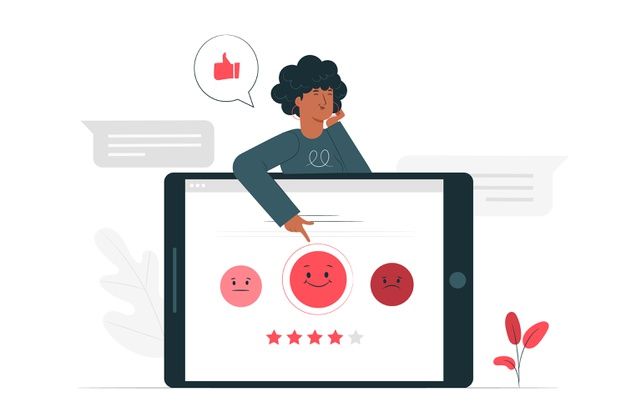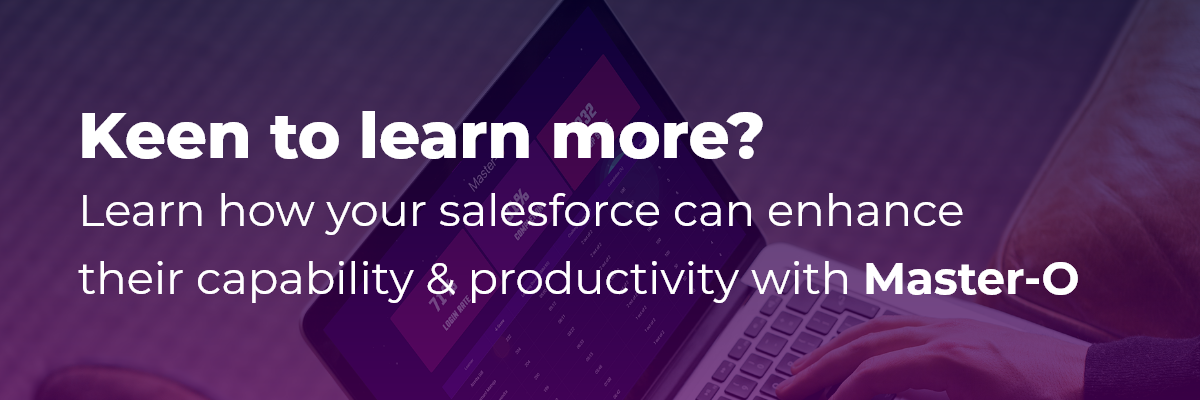Ever since sales enablement’s big breakout in 2017, it has become a dedicated function in many sales organizations creating a tangible impact on the business results. According to the Fifth Annual Sales Enablement Study by CSO insights in 2019, 61.3% of organisations reported having a dedicated sales enablement function. Large scale disruptions in the business landscape caused by digital transformation and the rise of remote work have made a sales enablement tool or platform all the more essential to enhance salesforce effectiveness & capability.
Sales enablement is defined as “a strategic, collaborative discipline designed to increase predictable sales results by providing consistent, scalable enablement services that allow customer-facing professionals and their managers to enhance every customer interaction.”
As the popularity and adoption of sales enablement tools increase, more sales organizations will realize the need to augment their existing LMS platform and invest in a sales enablement tool that focuses on skill development, practice, coaching & better application of sales competencies on the job.
Whether your organization has already embarked upon this journey or is just setting up its sales enablement practice, we have spotted five underlying trends that we believe will further accelerate the rise of sales enablement.
Furthermore, knowing about these trends could serve as a foundation for your sales enablement strategy in 2021 and how your organization could execute on its sales readiness and training initiatives.
Trend #1: Focus On Impacting Performance
Sales enablement is known to be correlated with strong client relationships, increased buyer engagement, and a more motivated salesforce. CSO’s data reveals that organisations that have formal sales enablement initiatives achieve a 49%-win rate in their forecasted deals, compared to 42.5% for those without. Per the report, a more structured and formal sales process is vital for customers to view the organisations as their strategic partner and their trusted advisor. In effect, what this means is that the focus on driving performance and showcasing impact due to sales enablement will gain more momentum in 2021.
Takeaway:
As head of sales enablement or even a business, chances are you have a lot of data on your sales reps' performance over the years. If your organization already has invested in a sales enablement platform, the focus should be to amass greater data on how your salesforce learn, practice and apply sales competencies and which of those data points directly link with the sales reps KPIs. More importantly, you could focus on how the pace or accuracy of enablement for a sales rep can link with lead indicators to your business as shown below:

In case your organization is just setting up a sales enablement function and you’re evaluating a robust platform, you would be well advised to consider how can sales enablement tools generate a better quality of insights and data on your sales reps to allow you to link enablement with business impact.
Trend #2: A More Engaging Enablement Experience Will Become Increasingly Critical
It’s a no-brainer that a motivated sales team enjoys their work more and work better, which results in higher top & bottom line. The frontline salesforce is the driver of the organisation’s sales efforts and therefore their engagement is crucial to driving any sales enablement initiative.
Seller engagement is important to ensure higher customer satisfaction and therefore should be top-of-mind for every sales manager, especially those running a modern selling program. Full engagement of the salesforce ranging from the frontline to the sales managers was found to have the following benefits according to the CSO Insights study:
· Organizations with an engaged sales force were more likely to follow a formal enablement approach: 62.3% compared to 53.7% of all respondents.
· Organizations with a highly engaged sales force were more likely to have aligned their enablement services to the customer’s path: 46.6% compared to 30.6% of all respondents.
· Higher adoption rates for sales process and methodology, 47.1% reported that more than three-fourths of their sales force used their defined sales processes daily, compared to 34.7% of all respondents.
· Better aligned coaching services—Among those organizations with highly engaged sales forces, 44.2% reported aligned coaching services, compared to only 29.6% overall
Takeaway:
To drive agility and engagement amongst the field force, sales leaders must invest in innovative platforms that deliver engaging virtual enablement programs. Sales leaders need to ensure that the sales enablement platform doesn’t suffer from low engagement as is the case with most traditional learning platforms. Sales reps are the customers for your sales enablement efforts, and they expect the same level of engagement and interactivity as most of your end customers would. For this purpose, sales enablement platforms utilising gamification and microlearning are gaining popularity as they make the enablement experience more engaging. Gamified microlearning platforms aid in the understanding of the nuances of how & when front line sales representatives learn, personalise the learning experience, improve their selling skills, and enable the sales reps to become more confident to apply their knowledge on the job. A data-driven approach to microlearning further bridges the gap between a sales manager’s intuition and actual results about his sales team, fueling more data to enable better correlation with the business. When implemented effectively a virtual sales enablement platform has the potential to promote flexibility and scalability amongst the sales reps.

Trend #3: More Outcomes Will Be Expected From Sales Enablement, With Different & Changing Priorities
Below are the top 10 goals of any sales enablement function according to CSO insights:
1. Increase win rates for forecast deals
2. Increase new account acquisition
3. Increase existing account penetration
4. Improve customer experience/reduce customer churn
5. Increase available selling time
6. Reduce sales cycle length
7. Decrease new person ramp-up time
8. Increase average deal size
9. Reduce sales force turnover
10. Reduce the cost of sales
While the major goal of any sales enablement function such as driving revenue has remained constant over the years, there is a change in the felt importance of “customer experience” in the goals list, with improving customer experience moving from the 6thto the 4th position. This is likely to move further up in the coming months. The 2018-2019 Sales Performance Study found that customer relationship levels have a greater positive impact on performance compared to sales processes. For instance, average win rates for those considered Trusted Partners were 59.9% versus a mere 39.5% for those who were considered Approved Vendors. Often, sales is seen as a dog-eat-dog world with the sales reps working under high pressure to match the quotas put forward by the sales leaders. In such situations without proper enablement sales reps can engage in aggressive customer prospecting and value proposition. To keep pace with an increasingly customer-centric market, the sales organisations need to take a more buyer-centered approach that allows buyers to decide on ways to engage with them.
Takeaway:
With the evolving market conditions, buyer expectations, and sales process challenges sales organisations are struggling to keep pace. While the primary audience for sales enablement remains the direct or field sales reps, sales enablement is now also expanding to support more roles across the revenue engine such as the support services and customer success teams. Therefore, to create a practice of delivering superior customer experience, sales organisations need to invest in platforms, tools, and services that can enable not only their salesforce but also their post-sales support to keep pace with their customers’ knowledge, buying habits & expectations. Here’s how leveraging other new-age principles like microlearning, gamification & data analytics, can prime the sales organisations for success at each level of the sales hierarchy:
· Front line sales get an engaging experience that builds a habit for enablement from the onboarding stage itself
· Sales managers get actionable insights on account of this habitual enablement
· Product heads & marketing managers get visibility on key aspects of the selling skills and product knowledge that are bright spots or trouble areas for each sales rep
· L&D and sales training teams can quickly repackage traditional sales training content at scale and speed & make their consumption habitual
· Sales leaders get a constantly up to date view on the state of readiness of their sales force across their business & geography.
Trend #4: Improving The “Intelligence” Of Sales Enablement Platforms & Tools
The last decade was characterised by growing anxiety amongst workers regarding the effect of AI on their job. This was felt even more prominently in the sales industry, who gradually came to the realisation that it will not hamper the jobs of the salesforce more so the frontline because of their indisputable importance in the buyer-seller journey. Now AI is seen more as a companion than a foe. The rise of artificial intelligence has produced a large range of products across industries, however, in the world of sales and marketing, it’s the chatbots that have gained much popularity. An important sales enablement goal therefore for 2021 for most sales organisations irrespective of B2C or B2B should be to build a business chatbot. The sales enablement process, arguably, is going to be radically transformed by AI more than any other aspect of operations. Chatbots can not only trigger follow-up emails, answer simple questions, evaluate responses, and make simple decisions saving the time of sales reps, but can also enable your lead qualification process. According to Forbes, AI can help sales professionals to identify promising new leads and can bolster their chances of closing on these leads.
Takeaway:
Traditionally the sales enablement tools were built as systems of integrations with the organisations ERPs, CRMs, and the LMSs the systems of record. However, in today’s world, the sales enablement tools are becoming systems of intelligence with their ability to study large sets of data on how sales reps view and consume their content, answer quizzes and assessments, practice skills and respond to feedback. By analysing the learning data, we can identify the skills and competencies that the sales reps are developing or struggling to develop. Sales trainers can also refer to the enablement data to constantly improve and update sales training content. Data can also be used to make the learning journey of sales reps adaptive based on their learning curve or ramp-up time as well as performance on the job. For sales leaders, these data points can help in forecasting important business decisions about team restructuring, upskilling, salesforce planning, to further enable their sales reps to generate and close more deals.

Trend #5: Investing in Blended Sales Enablement: Using Facilitator Led Training and Self-Paced Enablement
Sales is an ever-evolving function with constant changes in markets and strategies. In addition to this, salespeople lose 80% to 90% of what they learn after one month. Therefore, sales teams that reinforce training and stay up to date are more productive, confident, and efficient. In today’s world with most of the selling moving online and remote teams becoming the norm for 2021, several top-tier firms around the world are quickly adopting sales enablement practices to ensure that they cannot only deliver virtual sales enablement trainings but also improve the learning capabilities of their learner.
Blending trainer led classroom training with self-paced learning can further increase the effectiveness of your sales enablement efforts. To sustain enablement, self-paced learning can be clubbed with facilitator-led training to develop sales competencies using the best of different modes of learning. Additionally, virtually delivered micro-content reinforces learning post the facilitator’s session by keeping the sales reps connected with the topic for a longer duration, leading to higher retention and applicability.
2021 is likely to see a recalibration & optimization between physical enablement & virtual or digital enablement such that investments are optimized, curriculums are aligned to sales strategies and organizations can leverage the right mode of enablement at the right time.
Takeaway:
More and more companies are now moving away from traditional learning and development activities and are investing and demanding for more convenient and effective alternatives. The selling environment may look different now, but an organization can always ride this wave by understanding its employee’s needs and investing in the right and innovative learning strategy. Blending gamified microlearning with existing classroom training efforts can help you to drastically reduce follow-ups and enable the salesforce to develop learning habits of 2 to 5 minutes every day that will allow them to master new skills effortlessly. This bodes well for organizations looking to get more mileage from their existing training curriculums. They do not need to schedule classroom refreshers on sales training and can adopt the microlearning approach instead. Not only does this save travel & logistics costs, but it also saves time thereby, boosting sales productivity enormously. For fast-growing organizations with a lean sales training team, microlearning provides an opportunity to propose targeted sales training interventions on the back of microlearning data. Hence, for established as well as fast-growing organizations, microlearning can double up the effectiveness of classroom-based sales training initiatives.
Sales enablement learning and training platforms have gained a great deal of traction as they provide the training sales reps require from onboarding to the tools for readiness throughout their sales journey. A sales enablement learning and training platform can enhance your sales teams’ capability by:
· Bringing universality in sales content delivery. It also ensures that training support is provided not only to the frontline but to everyone who is involved in customer interaction such as the marketing team, distributors, product managers, trainers, and others. Although frontline sales representatives will always be the go-to people for sales, sales enablement equips more people with the right information so that there is a universal language followed across the organisation. For sales partners, sales enablement platforms provide a good opportunity to remain connected with the organisational changes and be up to date with the changes and trends.
· Increasing & accelerating sales-readiness by reducing ramp-up time by certifying the sales representatives with essential selling skills and knowledge required to engage with a customer. The sales readiness tools include regular coaching on the product and service information that lets them have meaningful conversations with potential buyers and achieve business results.
· Engaging sellers & partners more effectively by providing them with the right knowledge, the salesforce also becomes more confident and can position products & services better against the competition. With increased job satisfaction and the ability to successfully steer through a customer conversation, the right platform can motivate front line sales to go the extra mile and exceed their quotas & KPIs.
· Providing a more focused learning experience by focusing on improving skills associated with selling and enhancing the quality of customer conversations. The skills needed to sell and to convey product knowledge, involve constantly changing information, and hence sales enablement platforms nudge sales reps to constantly learn and practice their skills in this context.
As industries become hypercompetitive and selling occurs more in the digital, virtual, and physical world, a robust sales enablement tool or platform would go a long way in enabling your field force in a rapid, scalable & effective manner while allowing sales leaders to effortlessly align their vast sales & distribution workforce.
Looking to ready your salesforce and invest in an effective & engagement sales enablement platform?
Write to us at hello@masteroapp.com or schedule a demo to learn how Master-O can effortlessly enhance your sales reps capabilities that lead to improved omnichannel customer interactions, higher win rates, shorter sales cycles, and much more.
References

